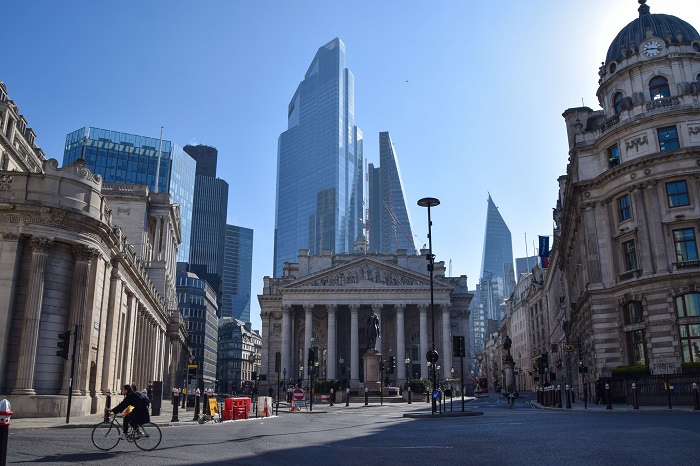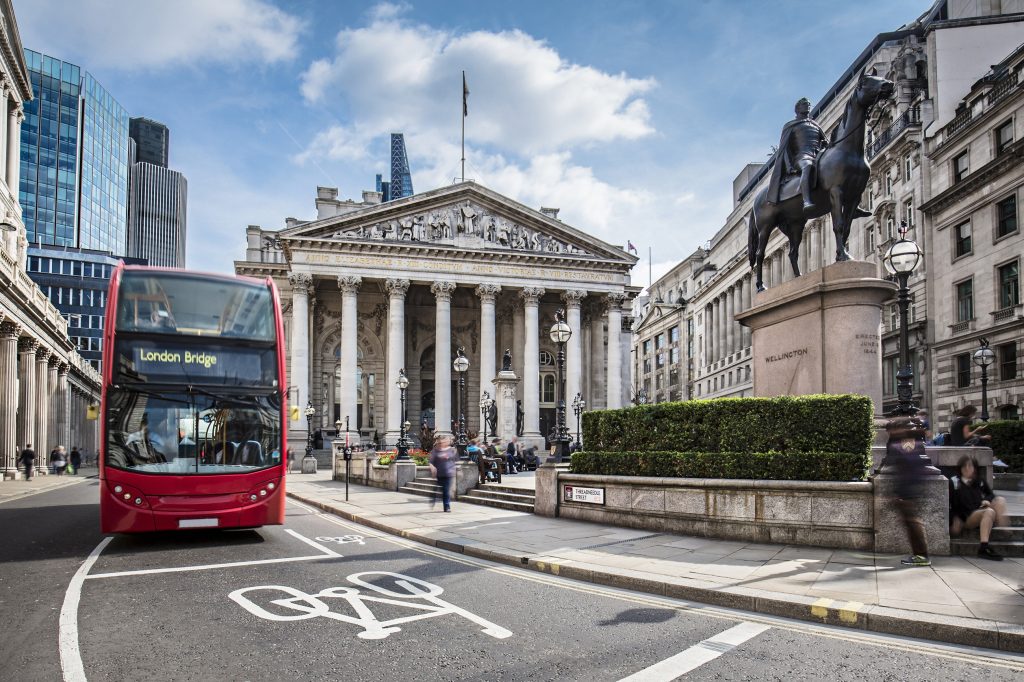Economic News Online News
By Danica Kirka
London (AP) — The Bank of England raised interest rates by a quarter-percentage point Thursday, shrugging off pressure for a bolder move to combat price increases that have pushed inflation to a 40-year high. Online News
The bank’s monetary policy committee voted 6-3 to boost its key rate to 1.25%, with the dissenters supporting a larger half-point increase. The U.S. Federal Reserve acted more aggressively on Wednesday, raising its benchmark rate by three-quarters of a percentage point to a range of 1.5% to 1.75%.
The United Kingdom’s central bank said its decision was based on an effort to contain inflation without choking off economic growth, which was just starting to recover from the coronavirus pandemic when food and energy prices began to rise worldwide. But the bank indicated it was ready to act more decisively if inflation becomes more deeply embedded in the economy.
“The scale, pace and timing of any further increases in bank rate will reflect the committee’s assessment of the economic outlook and inflationary pressures,” the bank said. “The committee will be particularly alert to indications of more persistent inflationary pressures, and will if necessary act forcefully in response.”
While the Bank of England began raising rates before its counterparts, it has now fallen behind the Fed in the worldwide fight against inflation fueled by soaring food and energy prices. None of the bank’s five consecutive increases since December has been more than a quarter-point.
Online News Economic News
Some analysts criticized the bank for failing to act more decisively in the face of a worsening economic picture.

“With the BoE seeing CPI at 11% — no less — in October, saying it will act forcefully if needed, and that it is particularly alert to more persistent inflation pressure … this begs the question: Why not hike more aggressively now? Why wait?” said Fawad Razaqzada, a market analyst at StoneX.
The war in Ukraine has boosted food and energy prices as the fighting disrupts shipments of oil, natural gas, grain and cooking oil. That is adding to price increases that began last year as the global economy started to recover from the COVID-19 pandemic.
Bank of England policymakers have been cautious about raising interest rates too quickly, arguing that many of the price pressures facing the British economy are external and beyond the bank’s control.
But price increases are now becoming embedded in the economy, fueling demands for higher wages and slowing economic growth as consumers and businesses curtail purchases.
Figures released this week by the Office for National Statistics showed that economic output stagnated in February and shrank by 0.1% in March, raising concerns that Britain may be headed for a recession.
The World Bank last week downgraded its outlook for the global economy and raised concerns about the return of “stagflation” — the combination of high inflation and sluggish growth last seen in the 1980s.
Nevertheless, a majority of the Bank of England’s monetary policy committee indicated that there had been “fairly limited” economic developments since the bank’s last report in May, according to the minutes of their meeting.
The three members who voted for a bigger increase were more pessimistic about the strength of the causes of inflation.
“These members also judged that monetary policy should lean strongly against risks that recent trends in pay growth, firms’ pricing decisions, and inflation expectations in the economy more widely would become more firmly embedded,” the minutes said. “Faster policy tightening now would help to bring inflation back to the target sustainably in the medium term, and reduce the risks of a more extended and costly tightening cycle later.’’
The Associated Press & the Canadian Press. All rights are reserved.
Online News Economic News
Notes from APS Radio News
During the past few years, a number of the world’s central banks have engaged in massive programs of monetary expansion, even as jobs and businesses were lost by way of virus-related restrictions and quarantines.
For example, beginning in March of 2020, the US Federal Reserve engaged in a substantially greater program of monetary expansion by purchasing hundreds of billions of dollars of Treasury and corporate bonds.
Since the early part of March 2020 to date, the Federal Reserve has added over $4 trillion to its holdings.
In particular, whereas on or about February 24, 2020, the holdings of the Federal Reserve stood at $4.2 trillion, on or about January 17, 2022, the holdings of the Federal Reserve stood at about $8.9 trillion.
As well, the Federal Reserve has kept interest rates low.
Recently, Jerome Powell, the head of the Federal Reserve, said that he wasn’t concerned about inflation and that, for the none, the Federal Reserve would keep interest rates at low levels.
Another examples is that of the Bank of Japan.
According to Fred Economic Data, as of October 2021, the Bank of Japan’s holdings were about $6.4 trillion or about 725 trillion Yen.
In the early part of March 2020, the Bank of Japan’s holdings were $5.3 holdings. During the period mentioned, the Bank of Japan added over one trillion dollars to its holdings.
A number of corporations have been borrowing money inexpensively and have been purchasing their own shares of stocks, increasing share prices of stocks.
Still, there are concerns among investors.
A number of them have expressed concerns about central banks’ eventually increasing interest rates, as, during the past year, inflation levels have been increasing.
Online News Economic News
The combination of low interest rates, expansive monetary policies, fiscal stimulus programs, which themselves have infused trillions into the US economy, and shortages of goods and services caused by virus-related restrictions and lockdowns has increased levels of inflation.
Investors also have worried, for example, about announcements that were made by companies like Toyota and VW; months ago, those companies announced that because of shortages of particular types of material, they would be reducing levels of production.
Months ago, the results of a survey of UK manufacturers were released.
That survey indicated that many businesses in the UK were concerned about shortages of supplies.
In general, jobs and businesses have been lost by way of mandates, restrictions and quarantines, which, in their turn, were imposed by way of the virus narrative.
In the US, overall, the mortality rate of the virus is about .069%, according to Statista, an award-winning service.
The recovery rate is over 99% for most age groups.
What has followed in the wake of lockdowns and mandates has been the infusion of trillions of dollars into the US economy, the increasing succeess of online businesses like Amazon and other large online retailers, various bank and tech-related stocks, the shuttering of small to medium-sized businesses and the loss of millions of jobs.
Another result has been the increasing levels of inflation, especially those of food and fuel.
In official terms, for purposes of reporting, the US Labor Department uses what is called “core inflation”.
Core inflation excludes items like food and fuel, as those are deemed too volatile.
Economic News Online News


